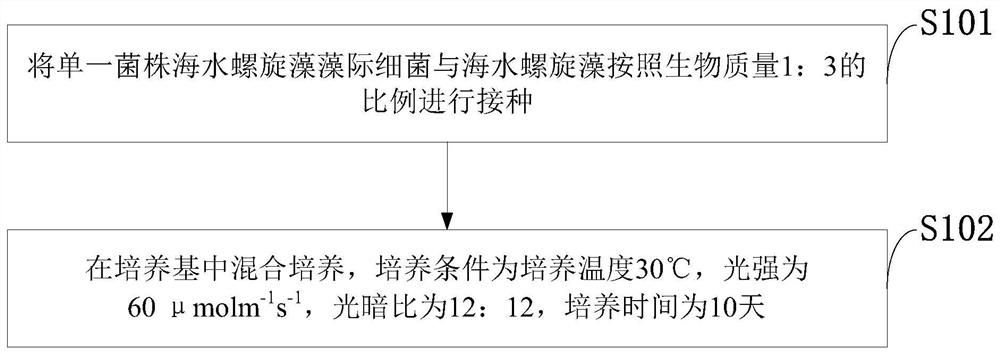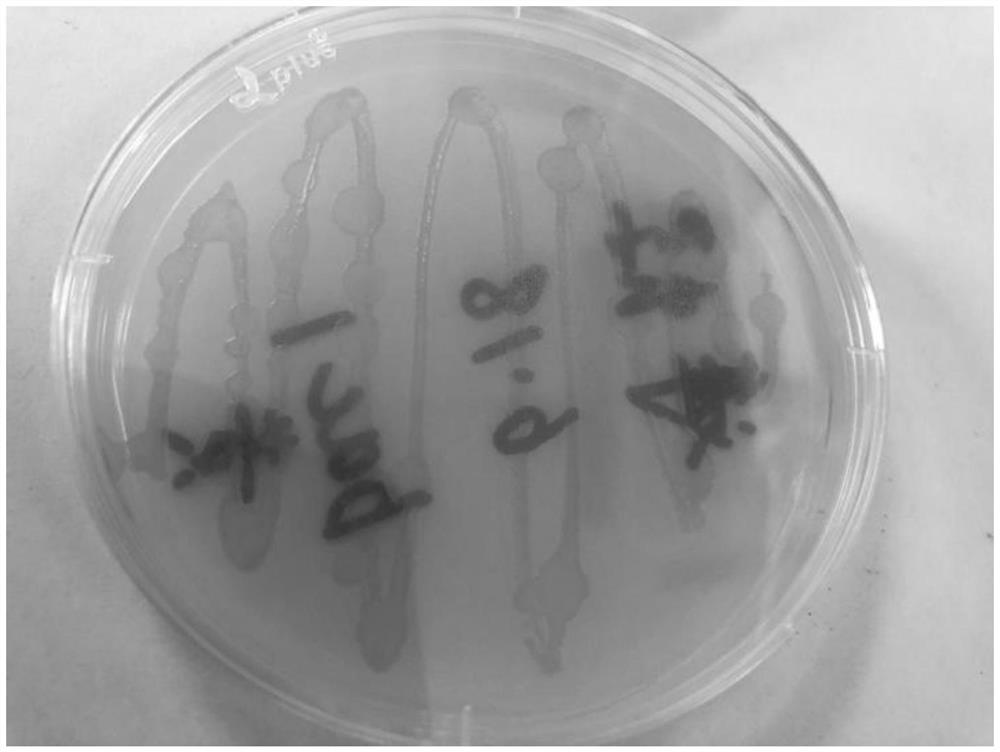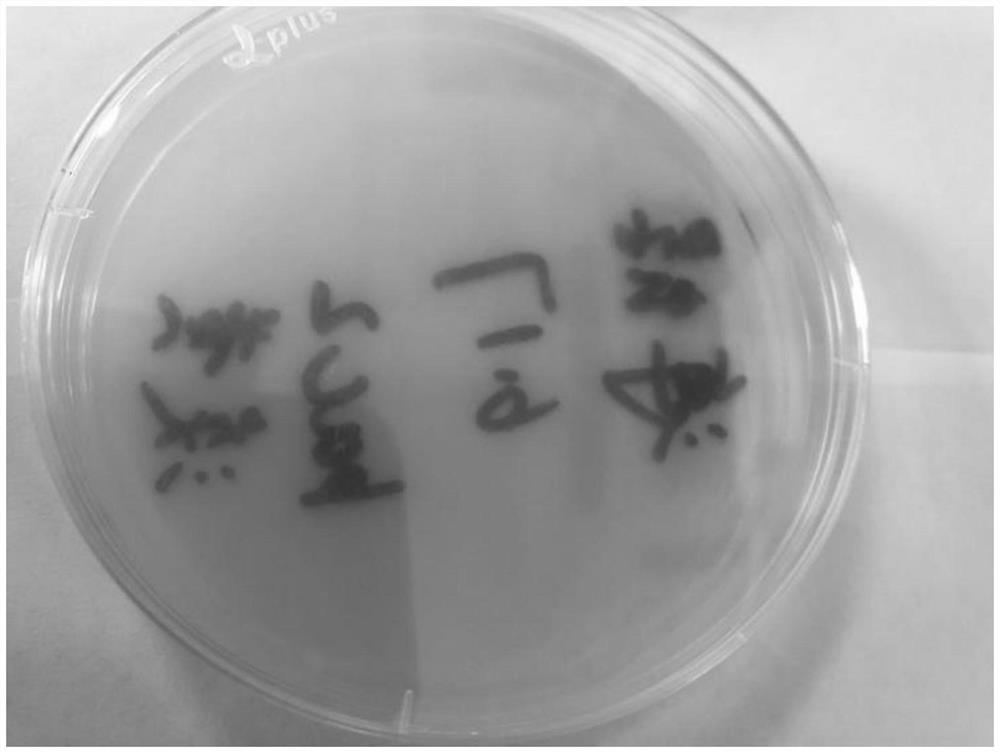A seawater spirulina-bacteria symbiosis system, construction method and application
A symbiotic system, spirulina technology, applied in microorganism-based methods, biochemical equipment and methods, bacteria, etc., can solve the problems of high cost, high cost and high cost of sludge treatment, and achieve good denitrification and phosphorus removal. The effect of improving metabolism and promoting bacterial growth
- Summary
- Abstract
- Description
- Claims
- Application Information
AI Technical Summary
Problems solved by technology
Method used
Image
Examples
Embodiment 1
[0060] In the present invention, seawater spirulina and Nitratireductor sp.strain ZYF759 are mixed and cultured to obtain a stable algae-bacteria symbiosis system. The inoculated biomass ratio of seawater spirulina and Nitratireductor sp.strain ZYF759 is 3:1;
[0061] Described seawater spirulina medium is seawater Zarrouk medium;
[0062] Described Nitratireductor sp.strain ZYF759 medium is 2216E liquid medium;
[0063] The mixed culture container is a 1000mL Erlenmeyer flask, and three parallel experiments are set for each group, and 500mL seawater Zarrouk medium is housed in the 1000mL Erlenmeyer flask;
[0064] The inoculation method is to centrifuge the seawater Spirulina culture medium and the Nitratireductor sp.strain ZYF759 culture medium separately, centrifuge at 5000 rpm for 5 minutes, discard the supernatant, resuspend and mix with fresh Zarrouk medium;
[0065] The temperature of the mixed culture was 30°C, and the light intensity was 60 μmol m -1 ·s -1 , the li...
Embodiment 2
[0071] In the present invention, seawater spirulina and Nitratireductor sp.strain ZYF759 are mixed and cultured to obtain a stable algae-bacteria symbiosis system. The inoculated biomass ratio of seawater spirulina and Nitratireductor sp.strain ZYF759 is 3:1;
[0072] Described seawater spirulina medium is seawater Zarrouk medium;
[0073] Described Nitratireductor sp.strain ZYF759 medium is 2216E liquid medium;
[0074] The mixed culture container is a 1000mL Erlenmeyer flask, and three parallel experiments are set for each group, and 500mL of simulated seawater aquaculture tail water is housed in the 1000mL Erlenmeyer flask;
[0075] The composition of the simulated mariculture tail water is: 132mg L -1 Glucose, 33.71mg·L -1 Ammonium chloride, 25.25mg·L -1 Potassium nitrate, 15.55mg·L -1 Potassium dihydrogen phosphate, 90mg·L -1 Magnesium sulfate, 14mg·L -1 Calcium chloride, 0.25mg·L -1 Cobalt chloride hexahydrate, 0.5mg L -1 Copper sulfate pentahydrate, 0.5mg L -1 ...
Embodiment 3
[0085]In the present invention, seawater spirulina and Microcellaalkaliphila, strain:JAM AC0309 are mixed and cultured to obtain a stable algae-bacteria symbiosis system, and the inoculated biomass ratio of seawater spirulina and Microcellaalkaliphila,strain:JAM AC0309 is 3:1;
[0086] Described seawater spirulina medium is seawater Zarrouk medium;
[0087] Described Microcellaalkaliphila, strain: JAM AC0309 medium is 2216E liquid medium;
[0088] The mixed culture container is a 1000mL Erlenmeyer flask, and three parallel experiments are set for each group, and 500mL seawater Zarrouk medium is housed in the 1000mL Erlenmeyer flask;
[0089] The inoculation method is to centrifuge the seawater Spirulina culture medium and Microcellaalkaliphila, strain:JAM AC0309 culture medium separately, centrifuge at 5000rpm for 5min, discard the supernatant, and use fresh Zarrouk medium to resuspend and inoculate;
[0090] The temperature of the mixed culture was 30°C, and the light intens...
PUM
 Login to View More
Login to View More Abstract
Description
Claims
Application Information
 Login to View More
Login to View More - R&D
- Intellectual Property
- Life Sciences
- Materials
- Tech Scout
- Unparalleled Data Quality
- Higher Quality Content
- 60% Fewer Hallucinations
Browse by: Latest US Patents, China's latest patents, Technical Efficacy Thesaurus, Application Domain, Technology Topic, Popular Technical Reports.
© 2025 PatSnap. All rights reserved.Legal|Privacy policy|Modern Slavery Act Transparency Statement|Sitemap|About US| Contact US: help@patsnap.com



